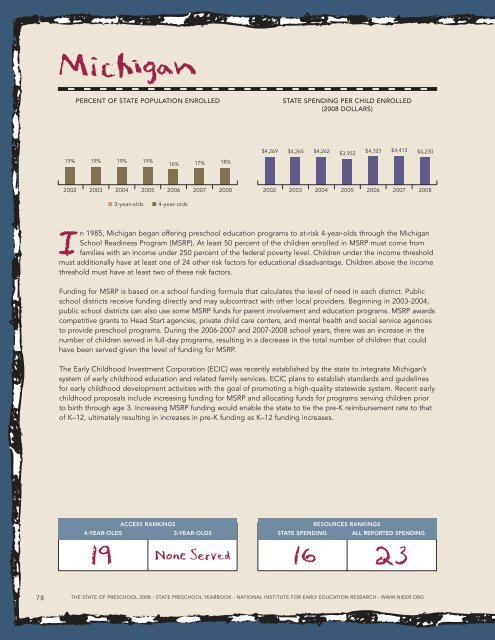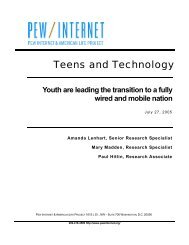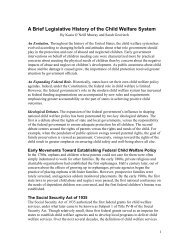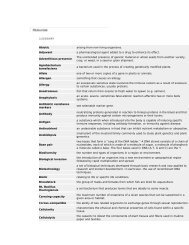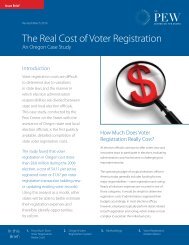Report: The State of Preschool 2008: State Preschool Yearbook
Report: The State of Preschool 2008: State Preschool Yearbook
Report: The State of Preschool 2008: State Preschool Yearbook
Create successful ePaper yourself
Turn your PDF publications into a flip-book with our unique Google optimized e-Paper software.
PERCENT OF STATE POPULATION ENROLLED<br />
STATE SPENDING PER CHILD ENROLLED<br />
(<strong>2008</strong> DOLLARS)<br />
19%<br />
19%<br />
19%<br />
19%<br />
16% 17% 18%<br />
$4,269 $4,265 $4,262<br />
$3,952<br />
$4,323 $4,413<br />
$4,230<br />
2002 2003 2004 2005 2006 2007 <strong>2008</strong> 2002 2003 2004 2005 2006 2007 <strong>2008</strong><br />
■ 3-year-olds<br />
■ 4-year-olds<br />
n 1985, Michigan began <strong>of</strong>fering preschool education programs to at-risk 4-year-olds through the Michigan<br />
School Readiness Program (MSRP). At least 50 percent <strong>of</strong> the children enrolled in MSRP must come from<br />
families with an income under 250 percent <strong>of</strong> the federal poverty level. Children under the income threshold<br />
must additionally have at least one <strong>of</strong> 24 other risk factors for educational disadvantage. Children above the income<br />
threshold must have at least two <strong>of</strong> these risk factors.<br />
Funding for MSRP is based on a school funding formula that calculates the level <strong>of</strong> need in each district. Public<br />
school districts receive funding directly and may subcontract with other local providers. Beginning in 2003-2004,<br />
public school districts can also use some MSRP funds for parent involvement and education programs. MSRP awards<br />
competitive grants to Head Start agencies, private child care centers, and mental health and social service agencies<br />
to provide preschool programs. During the 2006-2007 and 2007-<strong>2008</strong> school years, there was an increase in the<br />
number <strong>of</strong> children served in full-day programs, resulting in a decrease in the total number <strong>of</strong> children that could<br />
have been served given the level <strong>of</strong> funding for MSRP.<br />
<strong>The</strong> Early Childhood Investment Corporation (ECIC) was recently established by the state to integrate Michigan’s<br />
system <strong>of</strong> early childhood education and related family services. ECIC plans to establish standards and guidelines<br />
for early childhood development activities with the goal <strong>of</strong> promoting a high-quality statewide system. Recent early<br />
childhood proposals include increasing funding for MSRP and allocating funds for programs serving children prior<br />
to birth through age 3. Increasing MSRP funding would enable the state to tie the pre-K reimbursement rate to that<br />
<strong>of</strong> K–12, ultimately resulting in increases in pre-K funding as K–12 funding increases.<br />
ACCESS RANKINGS<br />
4-YEAR-OLDS<br />
3-YEAR-OLDS<br />
RESOURCES RANKINGS<br />
STATE SPENDING ALL REPORTED SPENDING<br />
78 THE STATE OF PRESCHOOL <strong>2008</strong> - STATE PRESCHOOL YEARBOOK - NATIONAL INSTITUTE FOR EARLY EDUCATION RESEARCH - WWW.NIEER.ORG


